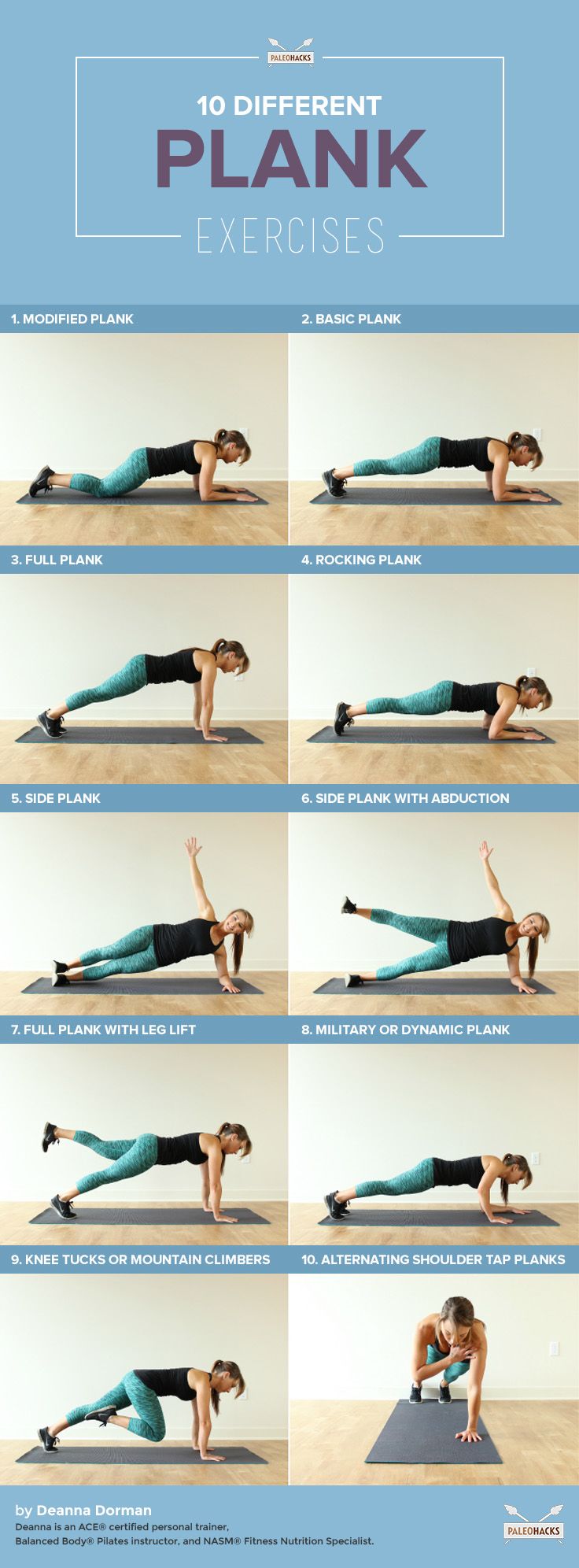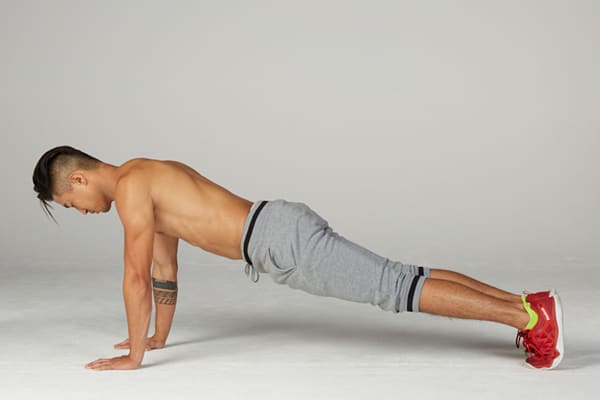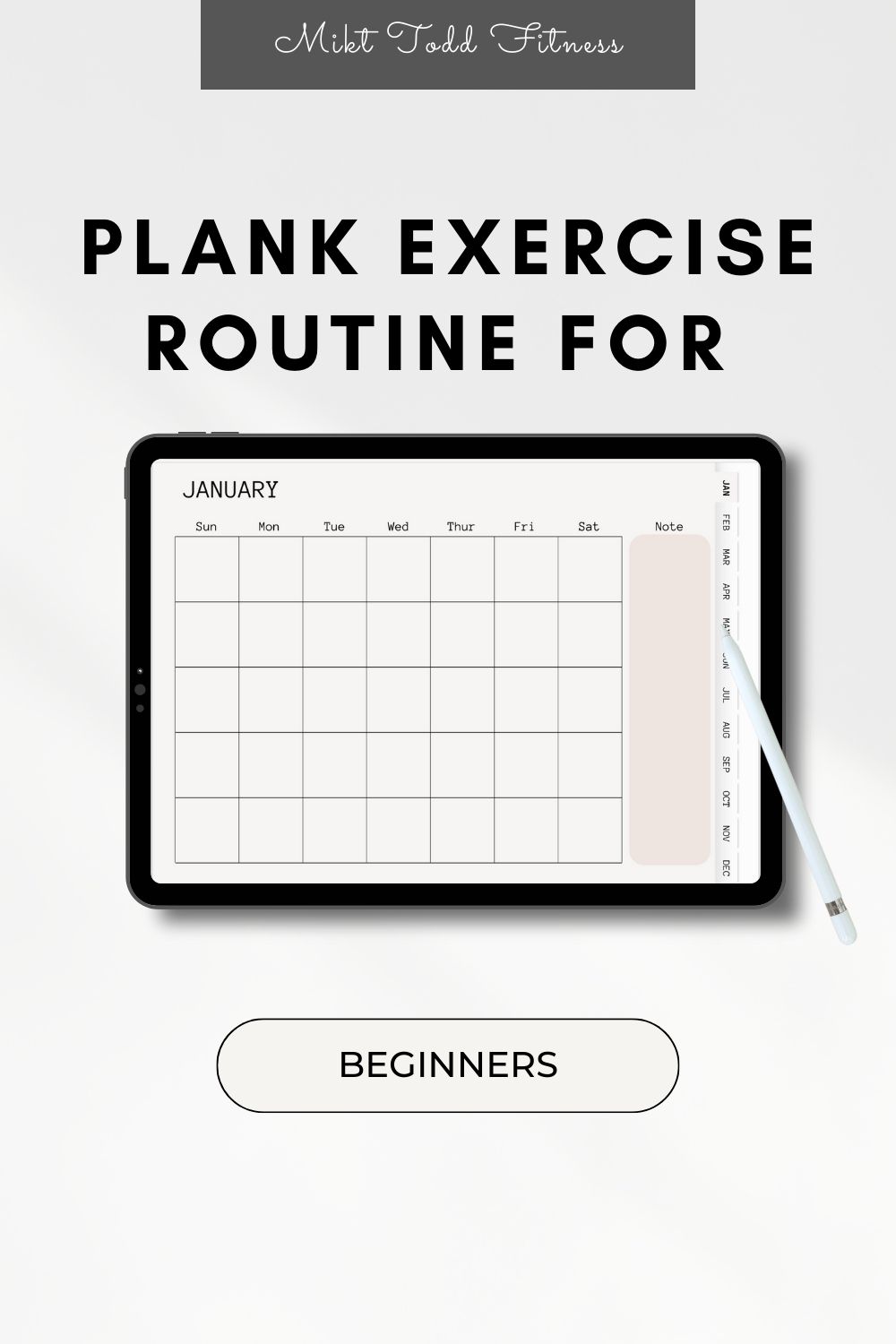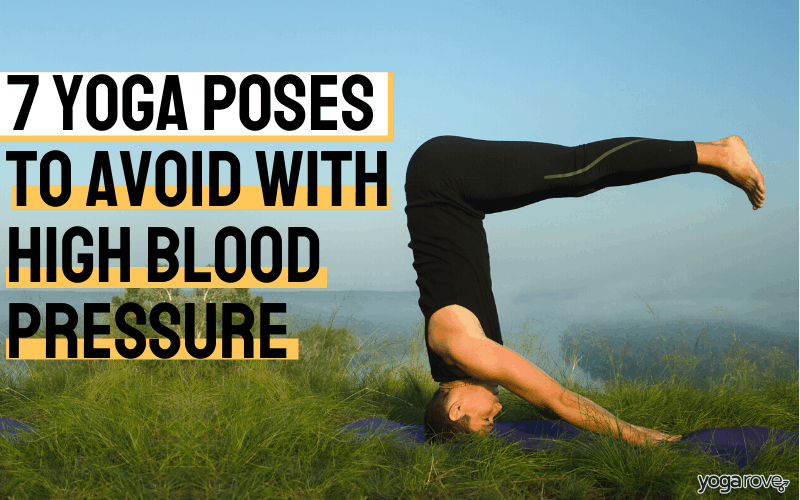Plank Exercise Routine for Beginners to build core strength. They are simple, effective, and require no equipment.
Plank exercises help strengthen the core, improve posture, and enhance overall stability. Beginners can start with a basic forearm plank, holding the position for 20-30 seconds. Gradually, you can increase the duration as your strength improves. Ensure your body forms a straight line from head to heels, engaging your core and keeping your back straight.
Incorporate side planks to target oblique muscles. Planks can be modified by performing them on knees for an easier version. Practicing consistently, about three to four times a week, will yield noticeable improvements in core strength and endurance.
Introduction To Plank Exercise
The plank is a powerful exercise Plank Exercise Routine for beginners. It strengthens your core muscles quickly. This exercise does not require any equipment. You can do it at home or anywhere. Planking helps build endurance and stability. It is perfect for a busy schedule.
Benefits Of Planking
- Core Strength: Planking targets your abs and lower back.
- Improves Posture: It helps keep your back straight.
- Boosts Metabolism: A strong core can increase your metabolism.
- Reduces Back Pain: It strengthens your back muscles.
- Enhances Flexibility: Planking stretches your shoulder and collarbone muscles.
Plank Variations Primer
There are many plank variations to keep things interesting:
- Forearm Plank: Rest on your forearms and toes. Keep your body straight.
- Side Plank: Lie on your side. Support your body with one forearm.
- Knee Plank: Perform a plank on your knees. It reduces the difficulty.
- Extended Arm Plank: Keep your arms straight. It is more challenging.
| Variation | Difficulty | Muscles Targeted |
|---|---|---|
| Forearm Plank | Medium | Core, Shoulders |
| Side Plank | Medium | Obliques, Shoulders |
| Knee Plank | Easy | Core, Lower Back |
| Extended Arm Plank | Hard | Core, Upper Body |
Start with the basics and progress gradually. Always listen to your body. Consistency is key to seeing results.
Pre-workout Essentials
Starting a new plank exercise routine for beginners can be exciting. Before diving in, it’s crucial to understand some pre-workout essentials. These will help you maximize your workout and prevent injuries.
Warm-up Routines
Warming up is a must before any workout. It prepares your muscles and increases blood flow. Here are some simple warm-up exercises:
- Jumping Jacks: Perform for 1 minute to get your heart rate up.
- Arm Circles: Rotate your arms in small circles for 30 seconds each direction.
- Leg Swings: Swing each leg back and forth for 30 seconds.
These exercises ensure your body is ready for planking.
Proper Form And Alignment
Proper form is vital for effective planking. It also prevents injuries. Follow these steps to maintain the right form:
- Start in a push-up position.
- Keep your body in a straight line from head to heels.
- Engage your core and avoid sagging your hips.
- Keep your elbows directly under your shoulders.
Here’s a table to summarize the key points:
| Steps | Details |
|---|---|
| 1 | Start in a push-up position. |
| 2 | Keep your body straight from head to heels. |
| 3 | Engage your core, avoid sagging hips. |
| 4 | Elbows directly under shoulders. |
Maintaining proper form ensures you get the most out of your plank exercise.
Starting With Basic Planks
Plank exercises routine are great for building core strength. They can improve posture and balance. For beginners, starting with basic planks is crucial. It helps in mastering the right technique and builds a solid foundation. Below, we’ll dive into the specifics of the forearm plank technique and the time duration for beginners.
Forearm Plank Technique
The forearm plank is a simple and effective exercise. Follow these steps to perform it correctly:
- Start by lying face down on the floor.
- Place your forearms on the ground, elbows under shoulders.
- Lift your body, keeping a straight line from head to heels.
- Engage your core and hold the position.
Ensure that your body does not sag or arch. Maintain a neutral neck and spine. This technique targets your abs, back, and shoulders.
Time Duration For Beginners
Plank Exercise Routine for Beginners should start with shorter durations. Aim to hold the plank for 20-30 seconds.
| Week | Time Duration |
|---|---|
| 1-2 | 20 seconds |
| 3-4 | 30 seconds |
| 5-6 | 45 seconds |
| 7-8 | 60 seconds |
Gradually increase the duration as your strength improves. Consistency is key to progress. Remember, quality over quantity is important. Focus on maintaining the correct form.
Progression Strategies
Once you’ve mastered the basic plank, it’s time to level up. Progressing with your plank routine helps build strength and endurance. Here are two effective strategies: Increasing Hold Time and Adding Plank Repetitions.
Increasing Hold Time
To get stronger, gradually increase your plank hold time. Start with small increments, like 5-10 seconds. This allows your body to adapt. Aim to add more time each week. Here’s a simple progression plan:
| Week | Hold Time |
|---|---|
| 1 | 20 seconds |
| 2 | 30 seconds |
| 3 | 40 seconds |
| 4 | 50 seconds |
| 5 | 60 seconds |
Adding Plank Repetitions
Another way to progress is by adding plank repetitions. This helps build stamina. Follow these steps:
- Hold a plank for 20 seconds.
- Rest for 10 seconds.
- Repeat for 3 sets.
Each week, add one more set. By the end of the month, aim for 5 sets. This method builds endurance without overloading your muscles. Remember to maintain proper form to avoid injury.
- Keep your back straight.
- Engage your core.
- Avoid dropping your hips.
Advanced Plank Variations
Plank exercises are fantastic for building core strength. Once you’ve mastered the basic plank, it’s time to challenge yourself with advanced variations. These advanced planks target different muscle groups and add variety to your routine.
Side Planks For Obliques
Side planks are excellent for targeting the oblique muscles. They also help improve balance and stability. Follow these steps to perform a side plank:
- Lie on your right side with legs straight.
- Prop up your upper body on your right elbow and forearm.
- Raise your hips until your body forms a straight line.
- Hold the position for 30 seconds.
- Switch sides and repeat.
Tip: Keep your core tight and don’t let your hips sag.
Reverse Planks For Posterior Chain
Reverse planks are great for strengthening the posterior chain, including the back, glutes, and hamstrings. Here’s how to do a reverse plank:
- Sit on the floor with legs extended.
- Place hands behind you, fingers pointing towards your feet.
- Lift your hips, forming a straight line from head to heels.
- Hold this position for 30 seconds.
- Lower your hips back to the floor.
Tip: Squeeze your glutes and keep your body straight.
| Plank Variation | Primary Muscles Targeted |
|---|---|
| Side Plank | Obliques, Core |
| Reverse Plank | Back, Glutes, Hamstrings |

Credit: www.thedailystruggle.co.uk
Incorporating Planks Into Your Routine
Planks are a fantastic way to strengthen your core. They are simple and require no equipment. Here’s how you can make planks a regular part of your fitness routine.
Creating A Weekly Plank Schedule
Setting a weekly plank schedule helps you stay consistent. Start slow if you are a beginner.
Here’s a simple schedule to get you started:
| Day | Activity |
|---|---|
| Monday | 20 seconds plank |
| Tuesday | Rest |
| Wednesday | 25 seconds plank |
| Thursday | Rest |
| Friday | 30 seconds plank |
| Saturday | Rest |
| Sunday | 35 seconds plank |
Increase the time by 5 seconds each week. This gradual increase helps build endurance without straining your muscles.
Combining Planks With Other Exercises
Combining planks with other exercises can improve your overall fitness. Below are some exercises to pair with planks:
- Push-ups: Strengthens chest and arms.
- Squats: Targets legs and glutes.
- Jumping Jacks: Increases heart rate.
Here’s a sample workout routine:
- Start with a 5-minute warm-up.
- 20 seconds plank.
- 15 push-ups.
- 20 squats.
- 30 seconds jumping jacks.
- Repeat 2-3 times.
Combining these exercises with planks gives a full-body workout. It helps in building strength and endurance.
Common Mistakes To Avoid
Plank exercises are excellent for building core strength. Beginners often make mistakes that reduce the effectiveness of the workout. Understanding these common mistakes will help you get the most out of your plank routine.
Incorrect Posture
Maintaining the correct posture is crucial for a good plank. Here are some common posture mistakes:
- Hips Too High: Ensure your body forms a straight line.
- Sagging Back: Keep your core engaged to avoid a curved back.
- Head Position: Keep your head in line with your spine.
| Posture Mistake | Correction |
|---|---|
| Hips Too High | Lower your hips to create a straight line. |
| Sagging Back | Tighten your core muscles. |
| Head Position | Keep your head aligned with your spine. |
Breathing Techniques
Proper breathing is important during a plank. Incorrect breathing can make the exercise harder. Here are some tips:
- Don’t Hold Your Breath: Holding your breath increases tension.
- Inhale Deeply: Take deep breaths to provide oxygen to your muscles.
- Exhale Slowly: Exhale slowly to maintain a steady rhythm.
Focus on slow, controlled breathing. This helps maintain your plank longer. Practice these techniques to improve your plank routine.
Tracking Your Progress
Monitoring your progress in a plank exercise routine for beginners is essential. It helps you stay motivated and achieve your fitness goals. Let’s dive into how you can effectively track your progress.
Setting Achievable Goals
Setting goals is the first step. Start with small, achievable targets. For beginners, this could mean holding a plank for 10 seconds.
- Week 1: Hold a plank for 10 seconds.
- Week 2: Increase to 20 seconds.
- Week 3: Aim for 30 seconds.
Gradually increase your plank time each week. This method helps build strength without overexertion.
Recording Plank Times And Form
Keep a record of your plank times. Write down the duration each day.
| Day | Plank Time (seconds) |
|---|---|
| Monday | 10 |
| Tuesday | 12 |
| Wednesday | 15 |
Review your progress at the end of each week. Also, pay attention to your form. Proper form is crucial for getting the best results.
- Keep your back straight.
- Engage your core muscles.
- Don’t let your hips drop.
Use a mirror or ask someone to check your form. Correct form prevents injuries and maximizes benefits.
Beyond The Basics
Once you’ve mastered the basic plank exercise routine for beginners, it’s time to push your limits. Going beyond the basics can help you gain more strength and stability. This section will explore advanced methods to elevate your plank routine.
Plank Challenges And Competitions
Plank challenges can spice up your routine. They add excitement and motivation. Try these to test your limits:
- 30-Day Plank Challenge: Increase your plank time daily.
- Group Competitions: Compete with friends for the longest hold.
- Weighted Planks: Add weights to increase difficulty.
These challenges can make planking more fun. They also help you stay committed.
Using Planks For Mindfulness And Focus
Planks are not just for physical strength. They can also improve your mental focus. Here are some tips:
- Breathe Deeply: Focus on your breath to stay calm.
- Set Intentions: Think about what you want to achieve.
- Stay Present: Focus on each muscle as you hold the plank.
Using planks for mindfulness can enhance your mental clarity. This makes your workout more holistic.

Credit: www.beachbodyondemand.com
Nutrition And Recovery
The plank exercise is a fantastic way to build core strength and stability. But to see the best results, you need to focus on nutrition and recovery. This section will help you understand the importance of eating right and recovering well after your plank workouts.
Diet Tips For Core Strength
Eating the right foods can boost your core strength. Here are some tips:
- Protein: Include lean proteins like chicken, fish, and beans in your diet.
- Healthy Fats: Avocados, nuts, and olive oil are great sources of healthy fats.
- Complex Carbs: Whole grains, fruits, and vegetables provide lasting energy.
Here is a simple table to illustrate a balanced diet:
| Meal | Food |
|---|---|
| Breakfast | Oatmeal with berries and nuts |
| Lunch | Grilled chicken salad with olive oil |
| Dinner | Salmon with quinoa and steamed vegetables |
| Snacks | Greek yogurt, fruits, nuts |
Post-workout Recovery
Recovery is as important as the workout itself. Follow these tips:
- Hydration: Drink plenty of water to stay hydrated.
- Stretch: Stretch your muscles to prevent soreness.
- Rest: Ensure you get enough sleep for muscle repair.
Here are some quick recovery foods:
- Bananas
- Protein shakes
- Chocolate milk
- Almonds
By focusing on nutrition and recovery, you can maximize the benefits of your plank exercise routine.
Testimonials And Success Stories
Plank exercise routine are simple yet powerful for beginners. Real people have seen amazing results. Their stories inspire others to start their journey.
Beginners’ Transformations
Many beginners start with just 10 seconds of planking. Over time, their endurance increases. They feel stronger and more confident.
| Name | Initial Time | Current Time | Transformation |
|---|---|---|---|
| Jane | 10 seconds | 2 minutes | Lost 5 pounds |
| Mark | 15 seconds | 3 minutes | Gained muscle strength |
Jane started with a 10-second plank. Now, she holds it for 2 minutes. She lost 5 pounds and feels fantastic.
Mark began with 15 seconds. Today, he can plank for 3 minutes. He gained muscle strength and confidence.
Expert Insights
Experts say planks are great for beginners. They target multiple muscle groups. They improve core strength and stability.
- Dr. Smith: “Planks are excellent for beginners. They build a strong core.”
- Coach Lee: “Consistency is key. Start small and increase time gradually.”
Dr. Smith emphasizes the importance of a strong core. He says planks are the best way to achieve it.
Coach Lee advises starting small. He believes consistency is key. Gradually increase the planking time for best results.
Safety Tips And Injury Prevention
Starting a plank exercise routine is exciting. But keeping safety in mind is essential. Injuries can happen if you’re not careful. Follow these tips to stay safe and injury-free.
Listening To Your Body
Listening to your body is crucial. If you feel pain, stop immediately. Discomfort is normal, but pain is a warning sign. Don’t ignore it. Adjust your position if needed.
Ensure your elbows and shoulders are aligned. Keep your back straight. Avoid sagging or arching your back. This can cause strain and injury.
Take breaks. Rest is as important as exercise. Give your muscles time to recover. Don’t push yourself too hard.
When To Consult A Professional
If you’re new to planking, consider consulting a professional. A trainer can guide you on proper form. They can help you avoid common mistakes. This reduces the risk of injury.
Consult a doctor if you have any medical conditions. They can advise if planking is safe for you. Don’t start any exercise routine without medical advice.
Here is a simple table showing common mistakes and corrections:
| Common Mistake | Correction |
|---|---|
| Sagging Hips | Engage core and lift hips |
| Arching Back | Keep back straight and aligned |
| Neck Strain | Keep neck neutral |
Remember, safety first. Proper form and listening to your body are key. Enjoy your plank exercise routine without injuries!

Credit: www.youtube.com
Frequently Asked Questions
What Are The Benefits Of Plank Exercises?
Plank exercises strengthen your core, improve posture, and enhance flexibility. They also reduce back pain and boost overall stability.
How Long Should Beginners Hold A Plank?
Beginners should aim to hold a plank for 20-30 seconds. Gradually increase the duration as you get stronger.
Can Planks Help With Weight Loss?
Yes, planks can aid weight loss by burning calories. They also build muscle, which increases your resting metabolic rate.
Are Planks Safe For Everyone?
Planks are generally safe for most people. However, consult a doctor if you have existing injuries or conditions.
Conclusion
Starting a plank exercise routine can transform your fitness journey. Remember to maintain proper form and gradually increase the duration. Consistency is key. With regular practice, you’ll build core strength and stability. Embrace the challenge and watch your progress. Start today and make planking a part of your daily routine.
Stay committed and see results!




Leave a Reply